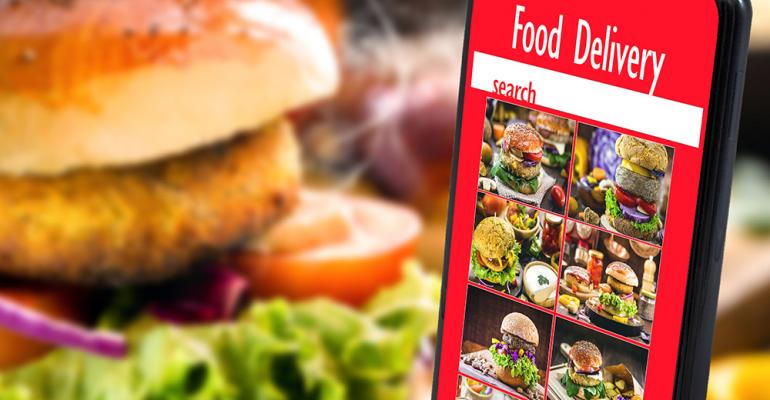There are 264 pages of topics in our book, Delivering the Digital Restaurant. But the No. 1 question we get asked is this: Can I just price up my menu to offset the delivery fees the third parties are charging me?
The answer? It depends.
After major news outlets reported that Chipotle increased its off-premises prices 17% in 2020, many restaurants figured they could do the same. After all, consumers value the convenience of delivery, so it stands to reason they would be willing to pay for it. The challenge is that the role of third-party delivery platforms is different for independent restaurants than it is for large brands like Chick-fil-A, Chipotle and McDonald’s.
A consumer who finds a big brand on a third-party delivery platform is likely already familiar with the brand. The consumer’s understanding of that brand’s value positioning has been influenced by advertising, experience in brick-and-mortar restaurants, and online ordering for delivery, both first-party and third.
A consumer who uses the third-party platforms for brand discovery has no pre-existing familiarity with smaller restaurant brands. Because the third-party platforms make it so easy to compare restaurants on three key dimensions — price, ratings and time — lesser-known restaurants run the risk of just seeming expensive if they mark up their existing menu to make room for delivery fees.
What is a small restaurant to do? Third-party platforms are a fantastic way to share your brand with new consumers. Opting out of the system means not being where your consumers are. But not increasing prices to accommodate fees leaves restaurants feeling like they are getting nothing out of the transaction.
We see three critical steps to get the most out of third-party platforms, in order of ease.
First, think through your restaurant’s marginal economics. If an order is incremental, your restaurant is not spending more on a new building, another manager, and more electricity. Most restaurants have marginal profitability between 40-50%, which leaves ample room for even the top-tier third-party pricing of 30%.
The third-party platforms, on their part, have made this even clearer by introducing tiered pricing models. As an example, on the UberEats platform, the lower 15% fee is charged when a consumer searches for a specific restaurant while the higher fees include marketing and placement on the carousels. This means restaurants are paying less for guests who already know them (maybe not incremental) and more for guests who don’t (probably incremental).
Here’s an example:

While profit margins on the third-party orders are indeed lower, they are still profitable. As third-party orders are incremental orders generating incremental revenue, they also generate incremental profits.
Second, invest in your first-party to third-party migration strategies. Once a guest has found your restaurant on the app, wow them with great service and great product — including a great price! This requires that your employees and franchisees don’t treat third-party platform orders as second-class transactions. Each and every order needs to go out the door quickly and flawlessly.
After you’ve created loyal fans out of consumers trying your restaurant for the first time, ensure they have a fantastic first-party ordering experience to come to. If the third-party experience is better (faster, more frictionless), consumers will not make the jump to order directly from you. Go through your ordering experience, that of competitors, and that of the third parties to ensure that your restaurant’s digital off-premises consumer journey is as good as it can be.
Next, give consumers a reason to order first-party. Whether it’s loyalty points, surprise giveaways, early access to new products, or reduced fees, consumers need a reason to do something that is harder than opening an app they already have and clicking a button.
Finally, recognize that some consumers will always prefer third-party platforms over your first-party ordering experience. These consumers are by definition incremental, because they would never order directly from your restaurant. Embrace that for certain segments — likely those who rarely use your restaurant — a third-party platform is the best way for them to interact with you.
Which brings us to the third, and hardest, lesson: designing for third-party. Part of the runaway success of virtual brands is that they have been designed for ecommerce. As the menus are created, they are created with an eye to the competition to be found on third-party platforms, with an eye to the deliverability of product, and with an eye to the all-in margin that results after all delivery costs are considered. Rather than pricing up versus on-premises menus for delivery, these menus are designed for delivery to begin with.
Thinking about your online offering “digital first” in this way ensures that your menu produces the right margin for your concept while also making sense to the consumer. If designing for an online offering causes dine-in and first-party ordering margins to be higher, the restaurant now has margin to play with to encourage the first-party channel (e.g., through offers, loyalty points, and bonus product).
Designing for first party means you may not put online everything that works on your on-premises menu. Your restaurant’s online menu should be made up of the items that deliver the best, are fastest to prepare, and have higher margins. Your restaurant’s online menu should also be considerate of upsells and add-ons, ensuring overall off-premises check is higher for the restaurant while still offering great value to the consumer.
Let’s take an example, where the online sale is NOT incremental because the brand has been designed for 100% online sales.
Brick-and-Mortar+ Model
- Dine-in burger price: $10
- Gross profit: $4 ($10 minus prime costs of 60%)
- Online burger price if prices increased to accommodate third-party fees: $14.30 (+43% upcharge to pay for 30% third-party fees)
- Online burger gross profit: $4 ($14.30 minus $4.30 third-party fee minus 60% prime costs)
This all seems fine — until one looks around and sees the relevant competition priced at $10-$12. A $14.30 burger can price your restaurant out of the consideration set. It may even earn your restaurant a reputation as a high-priced option that prevents guests from coming for dine-in.
Digital-First Model
- Online burger price: $12 (the price needed to keep the consumer considering your restaurant vs. competitors)
- Online burger gross profit: $4 ($12 minus $3.60 third-party fee minus 52% prime costs)
- Changes in menu design to accommodate lower prime costs:
- Separately priced for optional / add-on items like sides, sauces and toppings
- Smaller product size
- Shift from in-house to supply-chain prep
- Dine-in burger price: $10
- Gross profit: $4.80 ($10 minus prime costs of 52%)
This hypothetical leaves restaurants 80 cents for each product sold to use to incentivize the guest to the restaurant’s preferred channel.
While it can be tempting to “just price up for third-party fees,” it isn’t always the best answer. Think through your restaurant’s marginal profitability, how incremental your restaurant’s third-party sales are, and what the role of third-party sales are for your restaurant. Consider your brand’s strength and how familiar guests are with your value proposition.
AUTHOR BIO
 Meredith Sandland and Carl Orsbourn are co-authors of “Delivering the Digital Restaurant: Your Roadmap to the Future of Food.” After each spent 20+ years in corporate strategy and retail food, Meredith and Carl each concluded that food in America was changing. They left their corporate jobs in search of innovation that would transform the restaurant industry. Ghost kitchens, virtual brands, digital marketing, the gig economy and lean operations are at the heart of the future they envision. For more information, visit DeliveringtheDigitalRestaurant.com or email [email protected].
Meredith Sandland and Carl Orsbourn are co-authors of “Delivering the Digital Restaurant: Your Roadmap to the Future of Food.” After each spent 20+ years in corporate strategy and retail food, Meredith and Carl each concluded that food in America was changing. They left their corporate jobs in search of innovation that would transform the restaurant industry. Ghost kitchens, virtual brands, digital marketing, the gig economy and lean operations are at the heart of the future they envision. For more information, visit DeliveringtheDigitalRestaurant.com or email [email protected].





